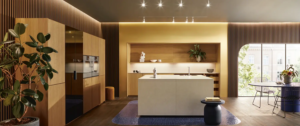
While aesthetics play a crucial role in commercial fit-outs, the practical aspects of the process are equally essential. Successful commercial office fit out goes beyond creating visually appealing spaces; they prioritize functionality, efficiency, and the seamless integration of practical elements. By reading the following passages, you can understand the practical side of commercial fit outs.
Space utilization and efficiency:
Efficient space utilization is a cornerstone of practical commercial fit-outs. Designers and fit-out professionals must optimize layouts to maximize functionality and accommodate the specific needs of the business. Well-utilized space contributes to an organized and productive environment, enhancing overall efficiency.
Ergonomics in design:
The incorporation of ergonomic principles is a practical consideration in commercial fit-outs. Furniture, workstations, and layout designs should prioritize the well-being of employees by promoting comfortable and efficient work environments. Ergonomic considerations contribute to increased productivity and reduce the risk of workplace injuries.
Effective lighting solutions:
Practical commercial fit-outs prioritize effective lighting solutions. Properly designed lighting enhances visibility, reduces eye strain, and creates a conducive working environment. A thoughtful approach to lighting design also considers energy efficiency and aligns with sustainability goals.
Sound management:
Commercial spaces often require careful consideration of sound management. Practical fit-outs address acoustics to minimize noise disruptions, ensuring a comfortable and focused atmosphere. Incorporating sound-absorbing materials, strategic layout designs, and noise reduction solutions contributes to a more productive work environment.
Durability and low maintenance:
Practicality in commercial fit-outs involves selecting materials and finishes that prioritize durability and low maintenance. Commercial spaces experience high foot traffic and frequent use, making it essential to choose materials that can withstand wear and tear while requiring minimal upkeep. This contributes to long-term cost savings and sustainability.
Flexibility for future changes:
Practical commercial fit-outs anticipate future changes in business needs and foster adaptability. The design should allow for flexibility, accommodating potential expansions, reconfigurations, or changes in the use of space. This forward-thinking approach ensures that the fit-out remains functional and relevant in the long term.
Beyond the allure of aesthetics, the practical side of commercial fit-outs is essential for creating functional, efficient, and sustainable spaces. From efficient space utilization to compliance with regulations, consideration of ergonomics, and integration of technology, the practical aspects contribute to the overall success of a commercial fit-out.
